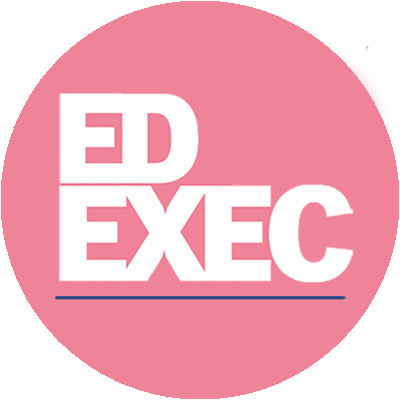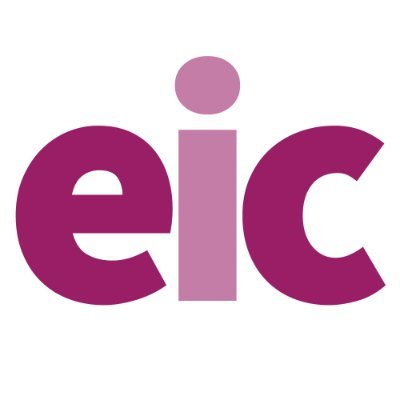Media outlets starting with E
-
 Education ExecutiveUnited Kingdom
Education ExecutiveUnited KingdomBackground and Format: Launched in 2004, Education Executive is published by Intelligent Media Solutions monthly and is aimed at school business managers who work in state schools and academies throughout England. Covers news, leadership, management, ICT matters and the workplace. For more information about advertising rates, Vicki Baloch can be reached at vicki@intelligentmedia.co.uk Circulation: Source: Publisher
-
EEducation FairUnited States of America
The Education Fair is Southeast Queensland’s leading Education Expo.
-
EEducation for All BlogUnited States of America
Discusses education-related issues in the developing world. The fundamentals of working with bloggers are the same as with traditional journalists at traditional media outlets: respect their schedules; take time to read their material to learn their interests; and only contact them if/when they want to be contacted. You will also find that if a blogger is a journalist for another outlet(s), Cision tracks their contact preferences there as well. The outlet offers RSS (Really Simple Syndication).
-
 Education for EverybodyUnited Kingdom
Education for EverybodyUnited KingdomBackground and Format: Launched in 1990, Education for Everybody is published by Euromedia Associates Ltd quarterly and is aimed at teachers and other education professionals who work with children and young people who have special needs. Covers news, products, disability & mobility products, learning outside the classroom, specialist schools & colleges, autism/sensory matters, fire safety, sports, play areas and refurbishment, fostering & adoption, music & drama, training and features. It also has sister publications QA Education Magazine and QA Nursery Magazine. For more information about advertising rates, Gemma Winstanley can be reached on + 44(0)1257 267 677 Circulation: Source:Publisher
-
 Education for Primary CareUnited Kingdom
Education for Primary CareUnited KingdomImpact Factor: 0.88 (Source: This value is calculated using ResearchGate data and is based on average citation counts from work published in this journal. The data used in the calculation may not be exhaustive.) Circulation: The publisher does not disclose the circulation. Affiliations: Official journal of the UK Association of Programme Directors (UKAPD), the National Association of Primary Care Educators UK and the World Organisation of Family Doctors (WONCA). Aims of the journal: Formerly known as Education for General Practice, Education for Primary Care aims to reflect the experience, expertise and innovative ideas in the development of undergraduate, postgraduate and continuing primary care education. The journal is based in the UK but welcomes contributions from all over the world. Content: Now a complete online website for clinical education across primary care, the new Education for Primary Care website offers subscribers to the journal a wide variety of resources, from peer-reviewed articles and editorials to forums and blogs. The new site provides: Peer-reviewed articles covering up-to-date research and case studies Research tools and resources to help you put innovations and ideas into practice Incisive discussion and debate in forums and on the blog about development and best practice for primary care education Readership: Healthcare professionals in the United Kingdom and overseas. Editorial contacts: The editorial team can be contacted at epc@radcliffepublishing.com. Manuscript Submissions: The journal welcomes articles from authors who have had teaching experience and who have evaluated new and successful teaching methods. Many other types of article are also welcome, as are news items or opinions on current issues of up to 1000 words. Author guidelines may be viewed here. Online manuscript submission can be found here.
-
EEducation Gadfly WeeklyUnited States of America
Discusses the education system and the issues it faces. It is delivered to subscribers via e-mail.
-
EEducation Grants AlertUnited States of America
Written for education administrators and dedicated to helping elementary and secondary school grant seekers win more money for their schools by saving research time. Dedicated to helping elementary and secondary school grant seekers win more money for their schools by saving research time. Provides tips to maximize their chance of success, alerts them to new funding opportunities, details the necessary steps to apply for a grant. Provides tips to maximize their chance of success, alerts them to new funding opportunities, and details the necessary steps to apply for a grant. Reveals the grants needed for every kind of program: math and science education, technology education, special education, vocational education, crime prevention, teacher training, computers and technology and other K-12 programs. Also includes regular updates on hard to find sources of private funding.
-
 Education in ChemistryUnited Kingdom
Education in ChemistryUnited KingdomBackground and Format: Education in Chemistry magazine covers the whole spectrum of chemistry teaching from balanced science in secondary courses to the final stages of undergraduate courses. Audience and Readership: The magazine is aimed at chemistry teachers those teaching pupils from the age of 14-19. It is also aimed at those studying on a PGCE chemistry/science course. Furthermore, heads of department, heads of undergraduate teaching and undergraduate admissions tutors are also part of the audience. Further readership analysis has revealed that 46.9% of readers are science teachers and 45.9% are heads chemistry/science. Deadline: There is no specific deadline. Time of Publication: Content goes online first and then it's published. There is no specific publication day. Circulation: Source: Publisher Monthly Unique Users: 47,000 (Source:Publisher) Distribution: The magazine is available through distribution in its print format and is delivered to every school and college in the UK and Ireland that is a member of the Learn Chemistry Partnership. It is also delivered to institutions offering PGCE chemistry/science degrees. Furthermore, universities in the UK and Ireland that offer undergraduate degrees in chemistry or a course with a substantial chemical science content also get copies delivered. Digital editions can also be accessed on iOS, Android or a web reader version here. Ad Rates: For information about advertising rates, please contact advertising@rsc.org Other information: Schools and colleges receive one copy of every issue. Universities get three copies of every issue.
-
 Education in ScienceUnited Kingdom
Education in ScienceUnited KingdomBackground and Format: Education in Science is the in house magazine of the Association for Science Education (ASE) and it is sent to all members of the Association. This is a professional rather than an academic journal, intended to provide a means of communication between all sections of the membership as well as being a vehicle for keeping members informed about what ASE is doing on their behalf. Education in Science (EiS) covers all phases of education - early years, primary, secondary and post-16 - as well as carrying material for teacher educators, student teachers, technicians, researchers, curriculum and professional developers. Commissioned articles which may be contributions addressing topical issues in science education or regular features designed to appeal to particular groups within the membership; unsolicited articles about current issues and initiatives in science education, projects and events; letters; updates from ASE groups and committees and short news items from other organisations. Audience and Readership: Sent to members of the Association for Science Education. Deadline: Varies depending on edition. Time of Publication: February, May, September, November Circulation: Source: Publisher Distribution: The magazine is send to members of the Association for Science Education. Ad Rates: Information on ad rates are not disclosed. Videos: The ASE's youtube channel can be found here
-
EEducation JournalUnited Kingdom
Background and Format: Education Journal is published by the The Education Publishing Co Ltd weekly and is aimed at educational professionals who work in schools,colleges and universities. Covers news, features, analysis, conference and parliamentary reports. It also has sister publications 14-19 Learning & Skills Bulletin, Basic Skills Bulletin, Children's Services Weekly, Education Parliamentary Monitor, Literacy Today, Numeracy Briefing and Workplace Learning & Skills Bulletin. There are no advertising opportunities. Circulation: Source: Publisher.